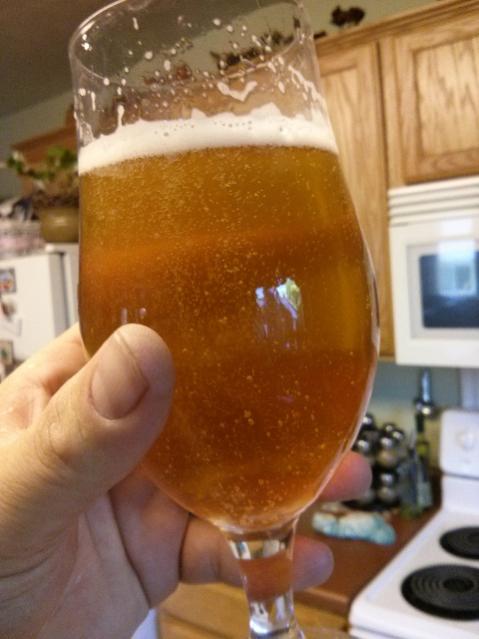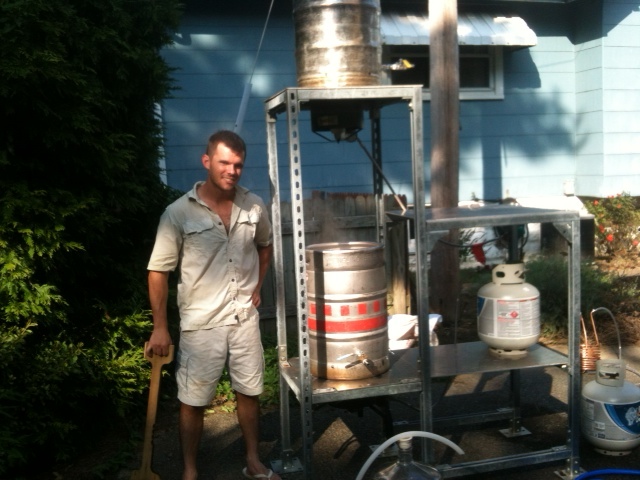I brewed this from the BYO recipe in early september. The final product was not exactly what I was hoping for. Some very off flavors, astringency/bitterness. Here are some details about the brew and what I think might have gone wrong. We had an OG of 1.054 (a bit low) and a FG of 1.013. I allowed 2 weeks in primary, and 1 week in secondary. Dry hopping was done in secondary, in a cheesecloth bag (we jammed the bag through the top of a 5 gal better bottle, I strongly recommend against this, as it didn't really want to squeeze through, in hindsight a much larger bag would probably take care of this). Beer was then kegged and force carbed for 1 week. Here are some theories about why this didn't turn out so well. Any feedback appreciated. 1. Lots of trub in primary fermenter. We weren't able to chill the beer rapidly (using a copper chiller, but water supply was not so cold, as it was a hot day). I'm guessing we didn't really separate out the "cold break". Im very new so I could be using the wrong terms or be mistaken about this. Beer sat on a thick layer of sediment for 2 weeks. This is my best guess for the cause of the problem. 2. Sparge temp. I think we intended to heat the sparge water to 175, but it got up to 185 as we didn't monitor it closely enough. We tried to let it cool for a bit but we didn't really let it drop too much. Still I checked the temp in the mash tun during sparging, and it didn't seem to rise above 165. Wondering if too hot of sparge water might account for the astringency. We only heated sparge to 170 on our next batch. 3. Quality of hops in dry hopping. We had whole leaf hops purchased from a local home-brew store. Im not sure exactly what they are supposed to look like, but they could've stood to be a bit greener I think.





